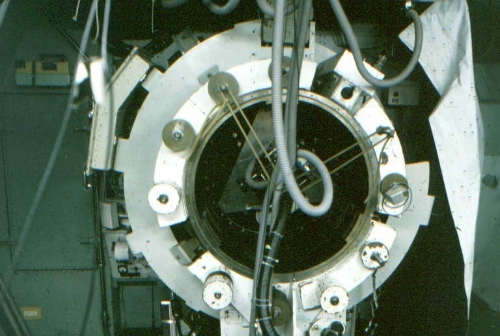As developments in infrared instrumentation made IR astronomy an increasingly powerful tool, scientists such as Frank Low increasingly looked to the skies for inspiration. Not just the astronomical sky, but the lure of carrying instruments, if not into space, at least above much of the absorbing water vapor which blocks most incoming infrared radiation (being the major greenhouse gas and everything). After flying a 12-inch telescope in a LearJet, NASA was impressed enough to put a 0.9-m telescope on this C-141A transport. It served for 21 years up to 1995, when it was retired to direct resources to its successor. The KAO benefited both from altitude and the ability to go where needed when needed, a valuable capability for time-sensitive solar-system observations and SN 1987A. Some of the KAO's greatest hits include the rings of Uranus, far-IR line emission from interstellar gas, ythe structure of planetary atmospheres, and some of the earliest hints of the importance of dust in galaxy energetics.
There was much interesting engineering in the KAO project, particularly in how one could keep the telescope stable in a vibrating plane and keep the airflow steady around an opening in the fuselage. The telescope was insulated from the airframe by shock mounts, so that the focal station of the folded Cassegrain optical system (below) was accessible but bounced around. A carefully designed retracting door (just forward of the port wing, seen in the January 1980 picture above from its grayish edges) preserved laminar airflow across the aperture (though for future work, people would like to know how to do that even better to improve the image quality). There is a wealth of further inside information, including streaming video of observatory operations, from the WWW site of former KAO operator Juan Rivera.

The KAO's replacement, SOFIA, the Stratospheric Observatory for Infrared Astronomy, is under construction. This US-German project will carry a 2.5-meter telescope in a Boeing 747SP. By all accounts this will be vastly more powerful and vastly more comfortable, but owes its scientific case to two decades of research by KAO users.
Update: In an article in the October 2005 issue of the magazine Wings, Frederick Johnsen reports that the KAO was derived from comversion not of a USAF C-141A, but from the (virtually identical) Lockheed L-300A prototype civil transport. Civil Starlifters never went into production because airline orders fell short of the requisite 75-100 to make it an economical proposition.
Last changes: 10/2005 © 2001-5